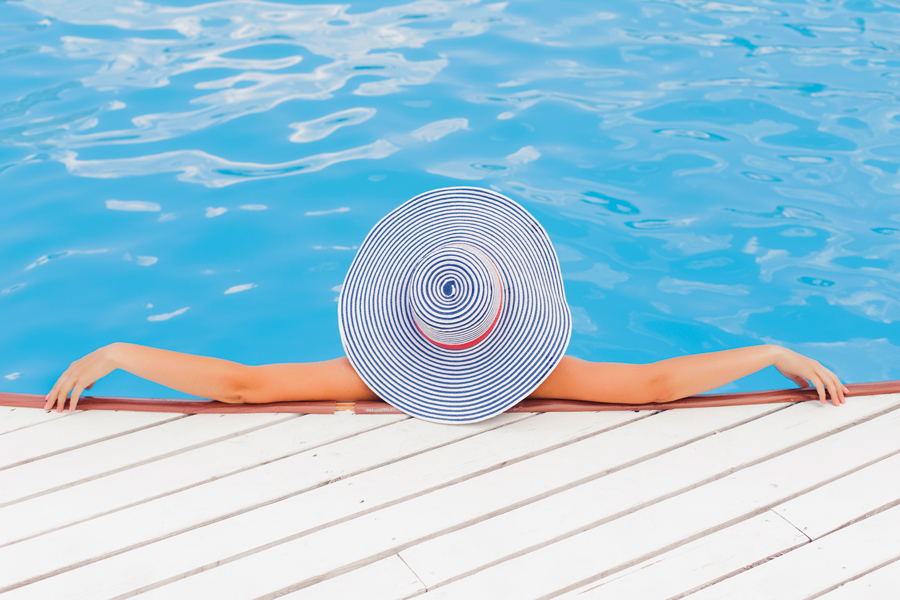Save Your Skin: Skip the Tan!

Winter can be a particularly dreary, frigid time of year, so it’s no wonder that we crave sunshine and desire its warmth. But while the sun is invariably a welcome sight, exposure to it – or any ultraviolet (UV) light – has many negative, sometimes lethal, consequences.
Is tanning bad for you? Yes, unquestionably, and there are statistics to prove it. According to the Centers for Disease Control, skin cancer is the most common cancer occurring in the United States. To look at the dangers from another perspective, the Skin Cancer Foundation has reported that, worldwide, the number of cases of skin cancer due to tanning is greater than the number of lung cancer cases due to smoking.
So although many people consider a tan to be a sign of good health, that healthy-looking glow – whether acquired on the beach, through indoor tanning, or as a result of incidental exposure to ultraviolet light – can cause a host of problems, as well as irreversible damage to your skin, your largest organ. Among tanning’s side effects are loss of skin elasticity, wrinkles, brown spots, immunosuppression, eye damage and blindness, skin cancer, and yes, even death. And skin damage can occur with as little as 15 minutes’ exposure.
You don’t have to give up that beach vacation or exotic cruise entirely, but you do need to take some precautions to safeguard your health and that of your family. The following strategies will help minimize your risks:
- Apply sunscreen evenly to all exposed parts of your skin. Before you venture outside, apply a broad spectrum sunscreen with an SPF (sun protection factor) of at least 15. Don’t skip this step even on cool or cloudy days, and reapply sunscreen if you’ve been outside for more than two hours or after swimming, perspiring, or toweling off.
- Seek the shade whenever possible. Take shelter from the sun’s rays under an umbrella, cabana, or tree to limit your exposure.
- Wear protective clothing. Take every opportunity to cover your skin by wearing lightweight, long-sleeved shirts and long pants or skirts, preferably made from tightly woven cloth, or at a minimum, don a beach cover-up or T-shirt. Nowadays, some clothing comes with an SPF rating. Bear in mind that a wet T-shirt offers less protection from UV rays than a dry one, and darker colors often provide a greater degree of protection than lighter colored ones.
- Don’t forget your hat and sunglasses. Wear a broad-brimmed, tightly woven hat to shield your face, ears, top of your head, and back of your neck. As with T-shirts, hats that are dark in color will afford the most protection. Your eyes, too, need to be protected. Wearing sunglasses – preferably those that block both UVA and UVB rays – will help to safeguard the tender skin around your eyes, as well as reduce your risk of developing cataracts.
- Timing matters. Limit your time outdoors between the hours of 10 a.m. to 4 p.m., when the sun is at its highest intensity.
- Skip the indoor tanning booth or sunlamp. Think exposure to the sun is your only risk? Think again. Those who engage in tanning indoors are at an increased risk, as the UV exposure from tanning booths, sunlamps, or tanning beds is constant, untempered by clouds, seasonal changes, or natural shade sources. Additionally, many are unaware that certain cosmetics and some medications can increase one’s sensitivity to UV light. And, contrary to popular belief, a base tan will not offer protection from getting a more serious sunburn. In fact, studies indicate that, compared to those who have never tanned indoors, people who have resorted to indoor tanning have a 74 percent higher risk of developing melanoma, the deadliest form of skin cancer. Indeed, if you begin tanning indoors at age 35 or younger, some studies have found that you increase your risk of being diagnosed with melanoma by as much as 87 percent. In fact, the risk of indoor tanning is so great that the U.S. Food and Drug Administration recently floated a proposal to ban sunbed use for those under the age of 18, and the agency may require sunbed manufacturers to issue clearer warnings about their risks. For more information on the myths surrounding indoor tanning, check out this infographic or visit the Daily Dose.
Our advice? Respect the skin you’re in and limit your exposure to UV light, whatever its source. Under any circumstance, tanning is bad for you, so if you can’t avoid the sun, be sure to follow the safety precautions outlined above. The risks to your health are just too great to ignore.
 The Daily Dose
The Daily Dose
Comments are closed.